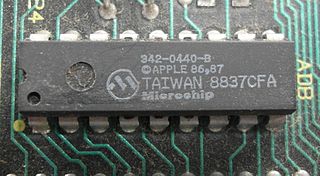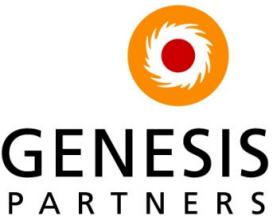Related Research Articles

Digital Visual Interface (DVI) is a video display interface developed by the Digital Display Working Group (DDWG). The digital interface is used to connect a video source, such as a video display controller, to a display device, such as a computer monitor. It was developed with the intention of creating an industry standard for the transfer of digital video content.

HDMI is a proprietary audio/video interface for transmitting uncompressed video data and compressed or uncompressed digital audio data from an HDMI-compliant source device, such as a display controller, to a compatible computer monitor, video projector, digital television, or digital audio device. HDMI is a digital replacement for analog video standards.
HomePlug is the family name for various power line communications specifications under the HomePlug designation, with each offering unique performance capabilities and coexistence or compatibility with other HomePlug specifications.
Qualcomm Atheros is a developer of semiconductors for network communications, particularly wireless chipsets. Founded under the name T-Span Systems in 1998 by experts in signal processing and VLSI design from Stanford University, the University of California, Berkeley and private industry. The company was renamed Atheros Communications in 2000 and it completed an initial public offering in February 2004 trading on NASDAQ under the symbol ATHR.

Microchip Technology Inc. is a publicly-listed American corporation that manufacters microcontroller, mixed-signal, analog and Flash-IP integrated circuits. Its products include microcontroller, Serial EEPROM devices, Serial SRAM devices, embedded security devices, radio frequency (RF) devices, thermal, power and battery management analog devices, as well as linear, interface and wireless solutions.

An audio/video receiver (AVR) is a consumer electronics component used in a home theater. Its purpose is to receive audio and video signals from a number of sources, and to process them and provide power amplifiers to drive loudspeakers and route the video to displays such as a television, monitor or video projector. Inputs may come from a satellite receiver, radio, DVD players, Blu-ray Disc players, VCRs or video game consoles, among others. The AVR source selection and settings such as volume, are typically set by a remote controller.

A video sender is a device for transmitting domestic audio and video signals wirelessly from one location to another. It is most commonly used for sending the output of a source device, such as a satellite television decoder, to a television in another part of a property and provides an alternative to cable installations.
Carrier Ethernet is a marketing term for extensions to Ethernet to enable telecommunications network providers to provide Ethernet services to customers and to utilize Ethernet technology in their networks.
Mobile High-Definition Link (MHL) is an industry standard for a mobile audio/video interface that allows the connection of smartphones, tablets, and other portable consumer electronics devices to high-definition televisions (HDTVs), audio receivers, and projectors. The standard was designed to share existing mobile device connectors, such as Micro-USB, and avoid the need to add additional video connectors on devices with limited space for them.
Uncompressed video is digital video that either has never been compressed or was generated by decompressing previously compressed digital video. It is commonly used by video cameras, video monitors, video recording devices, and in video processors that perform functions such as image resizing, image rotation, deinterlacing, and text and graphics overlay. It is conveyed over various types of baseband digital video interfaces, such as HDMI, DVI, DisplayPort and SDI. Standards also exist for the carriage of uncompressed video over computer networks.

DisplayLink is a semiconductor and software technology company. They develop the DisplayLink USB graphics technology, which is designed to connect computers and displays using USB, Ethernet, and WiFi. It also allows multiple displays to be connected to a single computer. DisplayLink's primary customers are notebook OEMs, LCD monitor manufacturers and PC accessory vendors, supporting the Microsoft Windows, macOS, Android, ChromeOS and Linux operating systems.

The Wireless Gigabit Alliance was a trade association that developed and promoted the adoption of multi-gigabit per second speed wireless communications technology "WiGig" operating over the unlicensed 60 GHz frequency band. The alliance was subsumed by the Wi-Fi Alliance in March 2013.

The Ethernet Alliance was incorporated in the US state of California in August 2005 and officially launched in January 2006 as a non-profit industry consortium to promote and support Ethernet. The objectives were to provide an unbiased, industry-based source of educational information; to ensure interoperability among disparate, standards-based components and systems; to support the development of standards that support Ethernet technology; and to bring together the Ethernet industry to collaborate on the future of the technology.
HDBaseT is a consumer electronic (CE) and commercial connectivity standard for transmission of uncompressed ultra-high-definition video, digital audio, DC power, Ethernet, USB 2.0, and other control communication over a single category cable up to 100 m in length, terminated using the same 8P8C modular connectors as used in Ethernet networks. HDBaseT technology is promoted and advanced by the HDBaseT Alliance.

Genesis Partners is an Israeli venture capital firm, founded in 1996 by Eddy Shalev and Dr. Eyal Kishon.

The OPEN Alliance is a non-profit, special interest group (SIG) of mainly automotive industry and technology providers collaborating to encourage wide scale adoption of Ethernet-based communication as the standard in automotive networking applications.
BroadR-Reach technology is an Ethernet physical layer standard designed for use in automotive connectivity applications. BroadR-Reach technology allows multiple in-vehicle systems to simultaneously access information over unshielded single twisted pair cable. Benefits for automotive manufacturers integrating the BroadR-Reach Ethernet standard include reduced connectivity costs and cabling weight, according to Broadcom Corporation, now Broadcom Limited, inventor of the BroadR-Reach standard.
Avnu Alliance is a consortium of professional, automotive, consumer electronics and industrial manufacturing companies working together to establish and certify the interoperability of open Audio Video Bridging (AVB) and Time-Sensitive Networking (TSN) standards. The Alliance works with its member companies to certify AVB and TSN products for interoperability. Manufacturers may use the Avnu logo on such certified products. Not every AVB-compliant device is submitted for certification to the Avnu Alliance. The lack of the Avnu logo does not necessarily imply a device is incompatible with other Avnu-certified devices.
mCube is a fabless semiconductor company founded in 2009 and headquartered in San Jose, California with locations in Hsinchu, Taipei, Shanghai, and Shenzhen. mCube is the provider of the world’s smallest microelectromechanical systems (MEMS) motion sensors, which are key enablers for the new Internet of Moving Things (IoMT). Virtually anything that moves can take advantage of a motion sensor, creating a huge market opportunity for MEMS manufacturers. By 2020, analysts predict more than 50 billion devices will be connected to the Internet and a large percentage of those devices will be in motion.

Audio Video Bridging (AVB) is a common name for the set of technical standards which provide improved synchronization, low-latency, and reliability for switched Ethernet networks. AVB embodies the following technologies and standards:
References
- ↑ Company Overview of Valens Semiconductor Ltd. Bloomberg
- ↑ Company profile on Crunbase
- ↑ Valens Semiconductor raises $7m in first round, Globes, 16 July 2007
- ↑ .HDTV transmission startup raises $7 million, Peter Clarke, EE Times, 7/17/2007
- ↑ "Archived copy". Archived from the original on 2012-02-28. Retrieved 2016-05-26.CS1 maint: archived copy as title (link)
- ↑ HDBaseT Alliance Announces Incorporation, Finalized Specification. Fierce Wireless, June 29, 2010
- ↑ Interview with Micha Risling from the HDBaseT Alliance Archived 2011-07-17 at the Wayback Machine . Display Standard, March 2010
- ↑ Valens Semiconductor Seals $14M, PE Hub Network – The Community for Professionals in Private Capital; July 6, 2011
- ↑ "HDBaseT Alliance Shows the Future of Connected Home Entertainment at CES 2013" (PDF). News release. January 9, 2013. Retrieved June 5, 2013.[ permanent dead link ]
- ↑ "Recipients of the 67th Annual Technology & Engineering Emmy Awards". National Academy of Television Arts and Sciences. Retrieved 24 April 2016.
- ↑ Israeli HDBaseT chip maker Valens raises $20M Series C to enter automotive tech:This semiconductor manufacturer sets their sights on changing your driving experience Gabriel Avner Jan 06, 2016
- ↑ Samsung, LG, Sony and Valens form HDBaseT Alliance Archived 2011-09-28 at the Wayback Machine . Audio Video Revolution, December 17, 2009
- ↑ 5Play Convergence and the Next HD Digital Connectivity Standard-White Paper Archived 2011-07-17 at the Wayback Machine . Valens Semiconductor, accessed March 23, 2010
- ↑ Valens HDBaseT tech carries HD video, audio and internet over Ethernet Archived 2012-02-28 at the Wayback Machine . HD.Engadget.com, December 15, 2009
- ↑ Valens-HDBaseT up the ante on AV wiring Archived 2012-02-28 at the Wayback Machine . Entertainment Technology Center, January 8, 2010